Analog & RF Filter Basics - Answers
|
|
Click here for the complete list of RF Cafe Quizzes. Note: Some material based on books have quoted passages. This Analog & RF Filter Basics Quiz targets those of you who are relative newcomers to the world of radio frequency (RF) electronics, but seasoned vets are welcome to give it a go as well. It addresses frequency response and physical construction. Images were obtained from Anatech Electronics documents entitled "Guideline for Choosing RF and Microwave Products" and "Understanding Filter Types and Their Characteristics." API Technologies' "RF & Microwave Filters," is also referenced. Please report any suspected errors to me via e-mail. Return to Quiz #70.
c) Chebyshev Cheyshev filters exhibit amplitude ripple in the passband and monotonic roll−off in the stopband.
a) Cavity b) Ceramic c) Crystal d) Lumped element L/C (inductor/capacitor) e) Tubular
a) Cavity Cavity filters use a coil inside a cavity for interstage coupling and resonance. They typically have a very high "Q" and low insertion loss.
a) Bessel b) Butterworth c) Chebyshev d) Elliptical e) Ideal
e) Ideal An ideal filter exhibits perfectly flat amplitude and group delay (and phase) in the passband and infinite attenuation in the stopband. As the name implies, ideal filters cannot be realized in the real world.
a) Cavity b) Ceramic c) Crystal d) Lumped element L/C (inductor/capacitor) e) Tubular
b) Ceramic Ceramic filters exploit the electromechanical resonance of the substrate to pass or reject signals depending on the frequency.
a) Bessel b) Butterworth c) Chebyshev d) Elliptical e) Ideal
a) Bessel Bessel filters are referred to as maximally flat group delay filters with no deviation at the band edge, as the plot demonstrates.
a) Cavity b) Ceramic c) Crystal d) Lumped element L/C (inductor/capacitor) e) Tubular
d) Lumped element L/C (inductor/capacitor) A lumped element filter uses actual physical inductors and capacitors as resonant elements to determine whether specific frequencies are passed or blocked.
a) Bessel b) Butterworth c) Chebyshev d) Elliptical e) Ideal
b) Butterworth Butterworth filters are referred to as maximally flat amplitude filters because the passband does not have any insertion loss ripple.
a) Cavity b) Ceramic c) Crystal d) Lumped element L/C (inductor/capacitor) e) Tubular
e) Tubular Tubular (aka Coaxial) filters have inherently broad stopbands with very high rejection levels. They are often inserted inline with coaxial cable interconnects when unplanned interference needs to be handled.
a) Bessel b) Butterworth c) Chebyshev d) Elliptical e) Ideal
d) Elliptical Elliptical (aka Cauer) filters have the highest theoretical stopband attenuation roll−off for a given number of poles.
a) Cavity b) Ceramic c) Crystal d) Lumped element L/C (inductor/capacitor) e) Tubular
c) Crystal Crystal filters rely on the electromechanical resonance properties of (most often) quartz crystals that are shaped and sized for resonance at specific frequencies.
Posted August 19, 2020 |

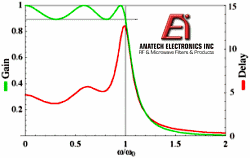 1.
The plot to the right is representative of amplitude and group delay responses for
which type of analog filter?
1.
The plot to the right is representative of amplitude and group delay responses for
which type of analog filter? 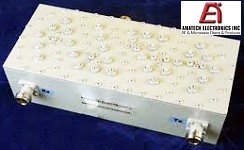
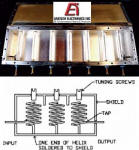
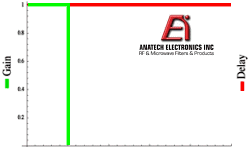 3.
The plot to the right is representative of amplitude and group delay responses for
which type of analog filter?
3.
The plot to the right is representative of amplitude and group delay responses for
which type of analog filter? 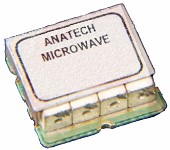 4. The
photo to the right represents which type of filter construction?
4. The
photo to the right represents which type of filter construction? 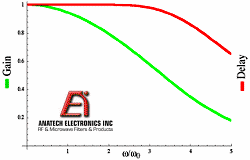 5.
The plot to the right is representative of amplitude and group delay responses for
which type of analog filter?
5.
The plot to the right is representative of amplitude and group delay responses for
which type of analog filter?  6. The
photo to the right represents which type of filter construction?
6. The
photo to the right represents which type of filter construction? 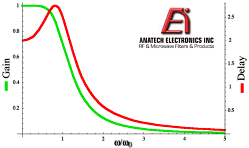 7. The plot to the right is representative
of amplitude and group delay responses for which type of analog filter?
7. The plot to the right is representative
of amplitude and group delay responses for which type of analog filter? 
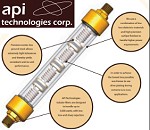
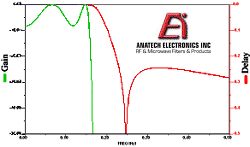 9.
The plot to the right is representative of amplitude and group delay responses for
which type of analog filter?
9.
The plot to the right is representative of amplitude and group delay responses for
which type of analog filter? 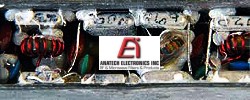 10. The
photo to the right represents which type of filter construction?
10. The
photo to the right represents which type of filter construction?